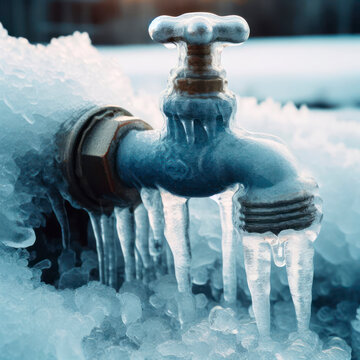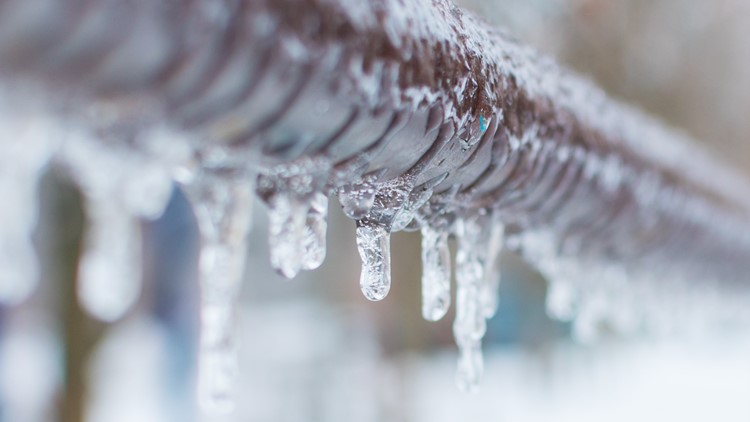Avoid Frozen Plumbing in Cold Weather: Pro Tips
Avoid Frozen Plumbing in Cold Weather: Pro Tips
Blog Article
Are you currently on the lookout for know-how about Prevent Frozen Pipes ?

Cold weather can damage your plumbing, specifically by freezing pipes. Below's just how to avoid it from occurring and what to do if it does.
Intro
As temperatures decline, the danger of icy pipelines rises, possibly leading to costly repair work and water damages. Recognizing how to prevent frozen pipelines is crucial for home owners in cool climates.
Avoidance Tips
Insulating susceptible pipelines
Cover pipes in insulation sleeves or make use of warmth tape to secure them from freezing temperatures. Concentrate on pipelines in unheated or exterior locations of the home.
Heating techniques
Maintain interior spaces appropriately heated, specifically areas with pipes. Open closet doors to enable warm air to distribute around pipelines under sinks.
How to identify frozen pipelines
Seek reduced water flow from faucets, unusual smells or noises from pipes, and visible frost on subjected pipelines.
Long-Term Solutions
Architectural adjustments
Think about rerouting pipelines away from outside wall surfaces or unheated areas. Include added insulation to attic rooms, basements, and crawl spaces.
Upgrading insulation
Buy premium insulation for pipelines, attic rooms, and wall surfaces. Correct insulation aids keep regular temperatures and decreases the risk of icy pipes.
Securing Outside Plumbing
Garden hoses and exterior taps
Detach and drain yard tubes prior to winter. Mount frost-proof spigots or cover outside taps with shielded caps.
Recognizing Frozen Pipes
What creates pipes to ice up?
Pipelines ice up when exposed to temperature levels listed below 32 ° F (0 ° C) for extended periods. As water inside the pipes ices up, it broadens, putting pressure on the pipeline walls and possibly triggering them to rupture.
Dangers and damages
Icy pipes can cause water system disturbances, property damages, and costly fixings. Burst pipes can flooding homes and create substantial architectural damages.
Indications of Frozen Pipes
Determining icy pipelines early can stop them from breaking.
What to Do If Your Pipelines Freeze
Immediate activities to take
If you think icy pipelines, keep faucets open to ease stress as the ice melts. Use a hairdryer or towels soaked in warm water to thaw pipelines slowly.
Conclusion
Stopping frozen pipelines calls for aggressive actions and fast feedbacks. By recognizing the causes, indications, and safety nets, homeowners can shield their plumbing during winter.
5 Ways to Prevent Frozen Pipes
Drain Outdoor Faucets and Disconnect Hoses
First, close the shut-off valve that controls the flow of water in the pipe to your outdoor faucet. Then, head outside to disconnect and drain your hose and open the outdoor faucet to allow the water to completely drain out of the line. Turn off the faucet when done. Finally, head back to the shut-off valve and drain the remaining water inside the pipe into a bucket or container. Additionally, if you have a home irrigation system, you should consider hiring an expert to clear the system of water each year.
Insulate Pipes
One of the best and most cost-effective methods for preventing frozen water pipes is to wrap your pipes with insulation. This is especially important for areas in your home that aren’t exposed to heat, such as an attic. We suggest using foam sleeves, which can typically be found at your local hardware store.
Keep Heat Running at 65
Your pipes are located inside your walls, and the temperature there is much colder than the rest of the house. To prevent your pipes from freezing, The Insurance Information Institute suggests that you keep your home heated to at least 65 degrees, even when traveling. You may want to invest in smart devices that can keep an eye on the temperature in your home while you’re away.
Leave Water Dripping
Moving water — even a small trickle — can prevent ice from forming inside your pipes. When freezing temps are imminent, start a drip of water from all faucets that serve exposed pipes. Leaving a few faucets running will also help relieve pressure inside the pipes and help prevent a rupture if the water inside freezes.
Open Cupboard Doors
Warm your kitchen and bathroom pipes by opening cupboards and vanities. You should also leave your interior doors ajar to help warm air circulate evenly throughout your home.

I have been very serious about How To Avoid Freezing Pipes and I am praying you liked my piece. Are you aware of another individual who is serious about the subject? Take a moment to promote it. I praise you for your time. Return soon.
Book An Estimate Now Report this page